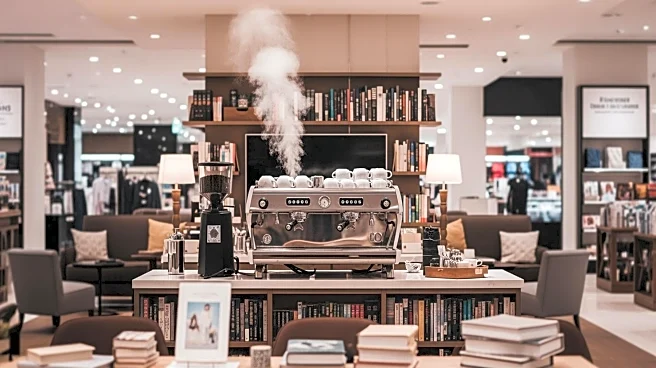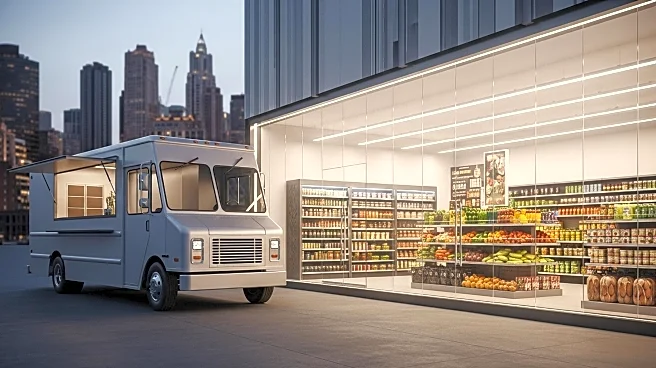What's Happening?
Retailers are increasingly redesigning their stores to function as 'third places,' aiming to create low-pressure environments where customers can linger between home and work. This concept, originally
proposed by sociologist Ray Oldenburg, emphasizes civic spaces like cafes and libraries rather than commercial venues. In response to post-pandemic declines in foot traffic and rising social isolation, brands are incorporating amenities such as seating areas, listening bars, and in-store cafes to encourage longer visits and foster community loyalty. However, the effectiveness of these strategies in driving sales remains uncertain.
Why It's Important?
The shift towards creating 'third places' in retail settings reflects a broader trend of businesses seeking to enhance customer experience and build community ties. By offering spaces that encourage social interaction and relaxation, retailers hope to strengthen brand loyalty and improve word-of-mouth marketing. This approach could potentially redefine the retail landscape, emphasizing experiential shopping over traditional transactional models. However, the challenge lies in balancing authentic community building with commercial interests, as overly branded environments may detract from genuine social connections.
What's Next?
Retailers will likely continue experimenting with 'third place' concepts, refining their strategies to better integrate community-building elements without compromising commercial goals. Success will depend on their ability to create environments that genuinely foster social interaction and customer engagement. As these initiatives evolve, retailers may face scrutiny over the authenticity of their community-building efforts, prompting further innovation in store design and customer experience.
Beyond the Headlines
The transformation of retail spaces into 'third places' raises questions about the role of commerce in community building. While these initiatives aim to enhance social interaction, they also highlight the tension between genuine community engagement and commercial branding. As retailers navigate this balance, the long-term impact on consumer behavior and retail industry standards remains to be seen.











